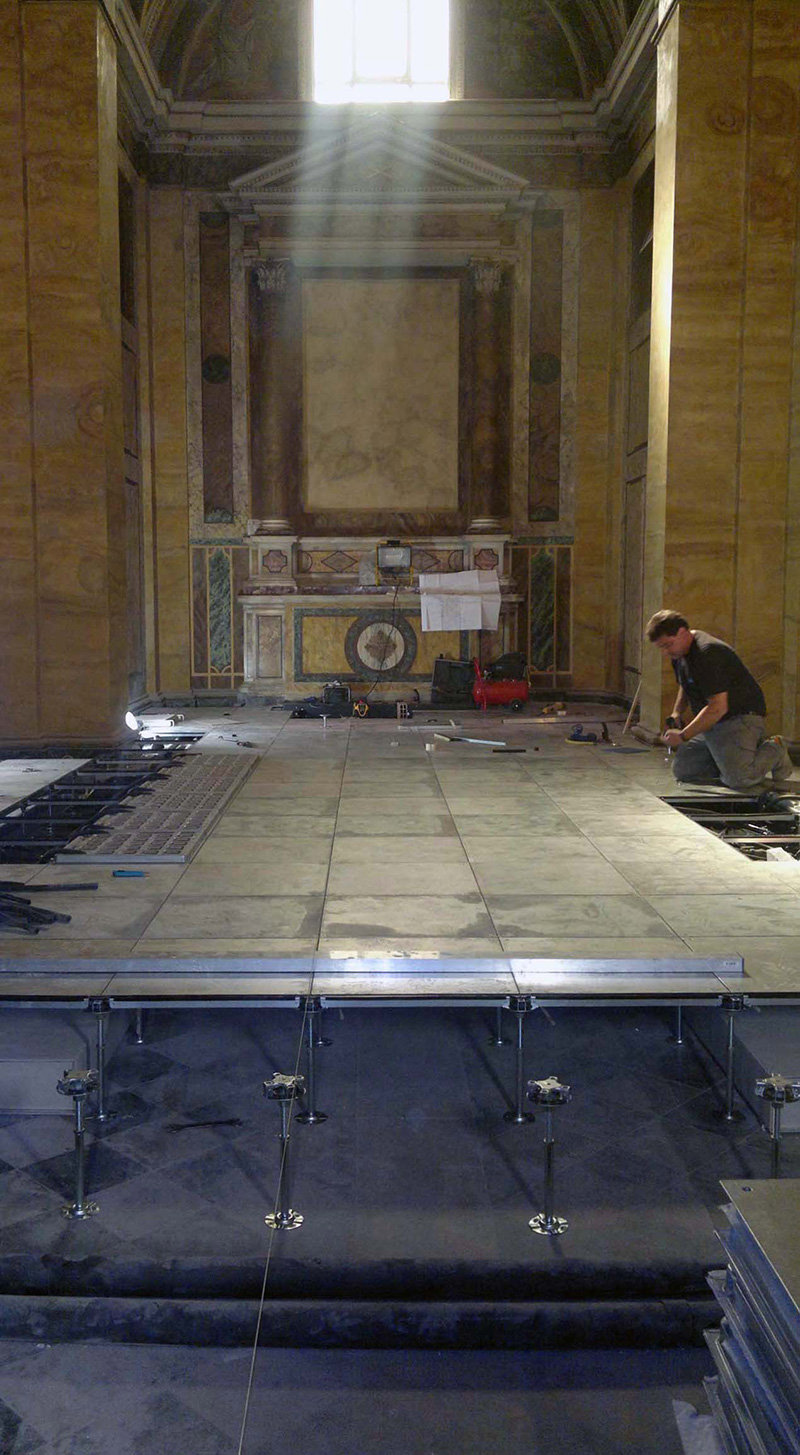Modulo Radiante in Saint Andrew of the Scots.
Near Piazza delle Quattro Fontane and near Palazzo Barberini, in the heart of Rome, PLANIUM was the protagonist of an improvement operation of a historic church thanks to the installation of MR01 Modulo Radiante. It is a raised access floor with a hot/cold system integrated into the modules and applicable in any building system, whose elevation function allows the possibility of inspecting the cavity, as well as preserving the original flooring below (think also of contexts in which they are present many cables that are not damaged).
In fact, the system is a raised section with modular modules that can be adopted and applied both on the screed and on a pre-existing surface: there is therefore no need to dismantle the previous flooring.
PLANIUM conceived this flooring in 2008 in which the main factor is also the homogeneous distribution of heat, which therefore involves achieving climatic comfort as a goal.
The client's choice of being able to opt for a finish among those proposed by PLANIUM is a plus: steels of different materiality and color (Calamine, stainless steel, oxidized steels, Stainless Concrete) or the enveloping tones of Copper and its Brass alloy.
The project is very particular because it demonstrates that it is possible to find a union between two worlds that are only apparently distant, that of History and Art on the one hand and technology on the other. Therefore it represents an encounter between humanism and science, classicism and technology. The objective of the installation was twofold, specifically thermal (dispersion due to the place, to the materials, the years of construction at the heights, the rising humidity typical of historic churches; hence also the choice of a system that allows inspection and not destroy the historic floor) and at the same time aesthetic given the context.

The church in which MR01 Modulo Radiante was installed is in fact the baroque Saint Andrew of the Scots with a single nave, built in 1592 at the behest of Clement VIII, Ippolito Aldobrandini of Fano, who approved the Scottish College of Rome a few years later (1600), with similar intentions in order to maintain Catholicism in Scotland. The marriage between James II Stuart and Beatrice of Este was celebrated in this church, but since 1962 it has been deconsecrated and is part of a real estate complex of a banking group.